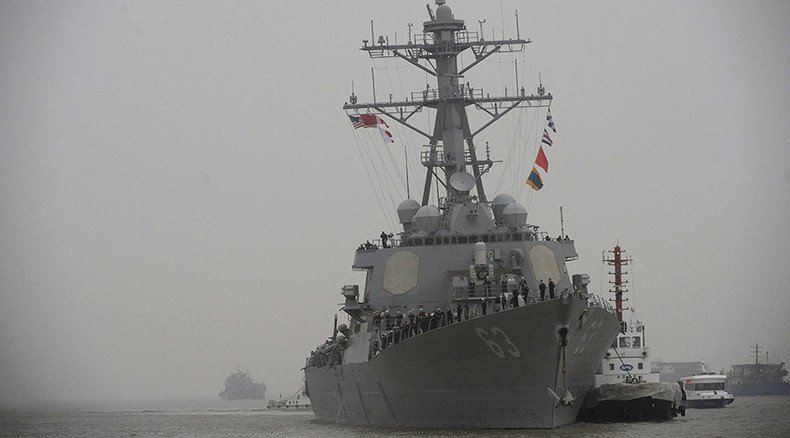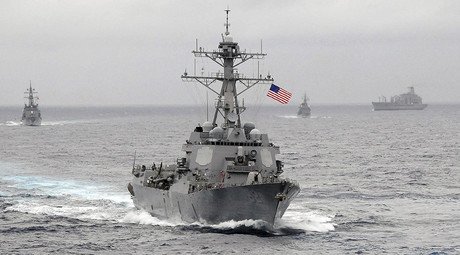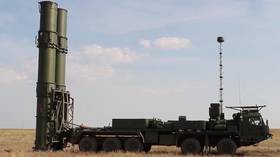US ship to drill with Chinese navy amid tensions

Tensions over US naval activity in the South China Sea have not prevented a US Navy destroyer from docking in Shanghai for scheduled drills with the Chinese navy. Chinese and US ships also conducted joint exercises in Florida earlier this month.
The USS Stethem, an Arleigh Burke-class guided missile destroyer, is to take part in communications exercises and a surface rescue simulation with vessels from the navy of the People’s Liberation Army (PLAN). The ship’s weeklong visit is intended to build trust between the two navies, Commander Harry Marsh, the captain of the USS Stethem, told reporters.
US sailors will learn about the practices of their Chinese colleagues “so that when we operate at sea we can do it safely, and we understand what they are doing and what we do,” Marsh told reporters, according to AFP. “Countries may have some disagreements, yet our navies are able to operate safely at sea.”
The drill was scheduled months in advance, long before another US Navy ship sailed dangerously close to an island in the South China Sea that Beijing claims as its sovereign territory. Known in the West as the Spratly Islands, the reef archipelago is also claimed by the Philippines, Vietnam, Malaysia, and Brunei.
On October 27, the USS Lassen, another Arleigh Burke-class destroyer, sailed within the 12-mile radius of an island where China has built an airstrip and other facilities on reclaimed land. The “freedom of navigation” operation prompted protests from Beijing.
“These actions of the US warship are a threat to the sovereignty and security of China, and safety of people living on the islands; they damage peace and stability in the region. In this regard, the Chinese side expresses extreme dissatisfaction and strongly protests,” China’s Foreign Ministry said in a statement.
U.S., China Hold #NavalExercises in #Atlantic
UPI, November 9, 2015
https://t.co/sGSSP2Ui3E via @upi
#USChina#Navy
— Naval&Maritime News (@NavalNews) November 10, 2015Just days later, however, several Chinese ships arrived in Florida for joint exercises with the US Navy. The Yiyang, a guided missile frigate; the Jinan, a guided missile destroyer; and the Qiandao Hu, a fleet oil tanker visited the Mayport US Naval Station in Jacksonville, Florida on November 3, UPI reported.
The Chinese vessels were joined by the USS Mason, a missile destroyer; the USS Monterey, a guided missile cruiser; and other US Navy ships on November 7. They conducted a six-hour exercise in the Atlantic involving the “coordination of maritime communications, fleet operations and rescue missions,” UPI reported, citing Chinese sources.
Russian, Chinese warships to hold joint historic drills in Black Sea, Mediterranean http://t.co/cG9EHq0MOxpic.twitter.com/3kyZBGmTie
— RT (@RT_com) May 8, 2015Officially a maritime branch of the People’s Liberation Army, the Chinese navy has evolved from a coastal defense force to a fleet capable of projecting force abroad. In August, the PLAN and the Russian navy conducted joint maneuvers in the Sea of Japan, while in May two Chinese frigates made a historic visit to Russia’s Black Sea fleet to mark the 70th anniversary of the victory in World War II. The two ships, the Linyi and the Weifang, then joined the Russian fleet for maritime drills in the Mediterranean.
Russian ships are scheduled to join the Chinese navy for joint exercises in the South China Sea in May 2016, the Russian Defense Ministry has confirmed.













